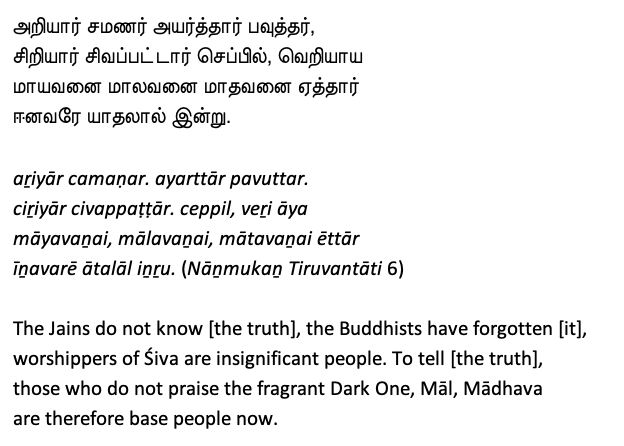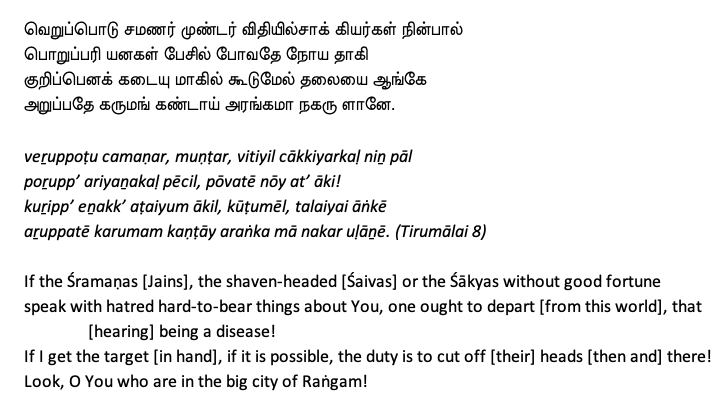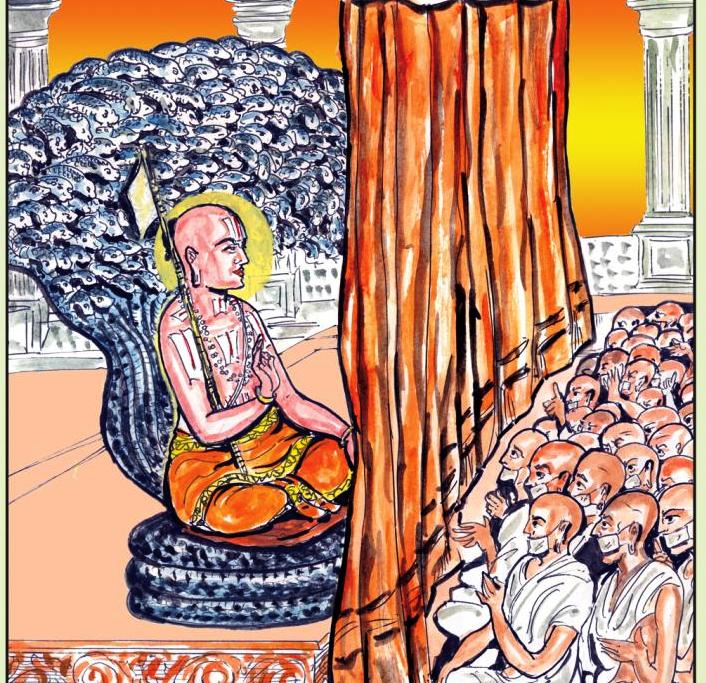Last year, I was invited to write on the Jains, for a felicitation volume in honour of Prof. Hampa Nagarajaiah. I took up the challenge and wrote an article (which hopefully will be published next month) basing it on what I already know about, i.e. the Āḻvār poetry. So, how are the Jains portrayed in the Divyaprabandham? The Nāyaṉmārs are known for their virulent anti-Jain rhetoric, the product of a hatred caused by a number of factors, like ideological, political, linguistic (real or imagined) and so forth. While the Buddhists are also condemned, the Jains do seem to bear the brunt (Peterson 1999 [1998]).
Among the Āḻvārs, the earliest to mention the Jains is Tirumaḻicai:

We can see that the criticism against the Jains is not particularly virulent, but rather perhaps a little spiteful. But then, the Śaivas seem to fare worse to me in this list, despite being fellow Vaidikas (or are they?), as opposed to the practicers of heterodox religions. Are they not supposed to be merely “opponent others”, rather than “wholly others” (Hirst 2008’s nomenclature) like the Jains? Apparently not. Familiarity breeds contempt, I guess. Or simply, as they, your next-door neighbour with whom you have petty issues, seem like a worse problem than the real enemy who lives streets away.
Anyway, there is an escalation in the violence of the words as the time goes:

Here we notice that with Toṇṭaraṭippoṭi Āḻvār (9th c.) is quite aggressive, and preaches retaliation in the most violent form. Perhaps the sole consolation is that it is suggested not because the others follow other belief systems (although their choices are wrong), but because they disparage Nārāyaṇa. And this violence is recommended if a Vaiṣṇava survives the assault of hearing “hard-to-bear things” on Nārāyaṇa, which somewhat makes them a lesser devotee. Once again here, the Śaivas figure in the list, couched between the Jains and the Buddhists.
The good thing is that there are only a few verses that verbally attack and insult the Jains, out of 4000. Not judging anachronically, we can notice that this kind of mutual blackening was the norm rather than the exception, and it is a happy thing that the Vaiṣṇava poets largely preferred focusing on their love for God.
Of course, exploring the Śrīvaiṣṇava hagiographic material would certainly yield more material, but that is for another day (NB: the image above, taken from here, represents Rāmānuja debating with 20000 Jains).

